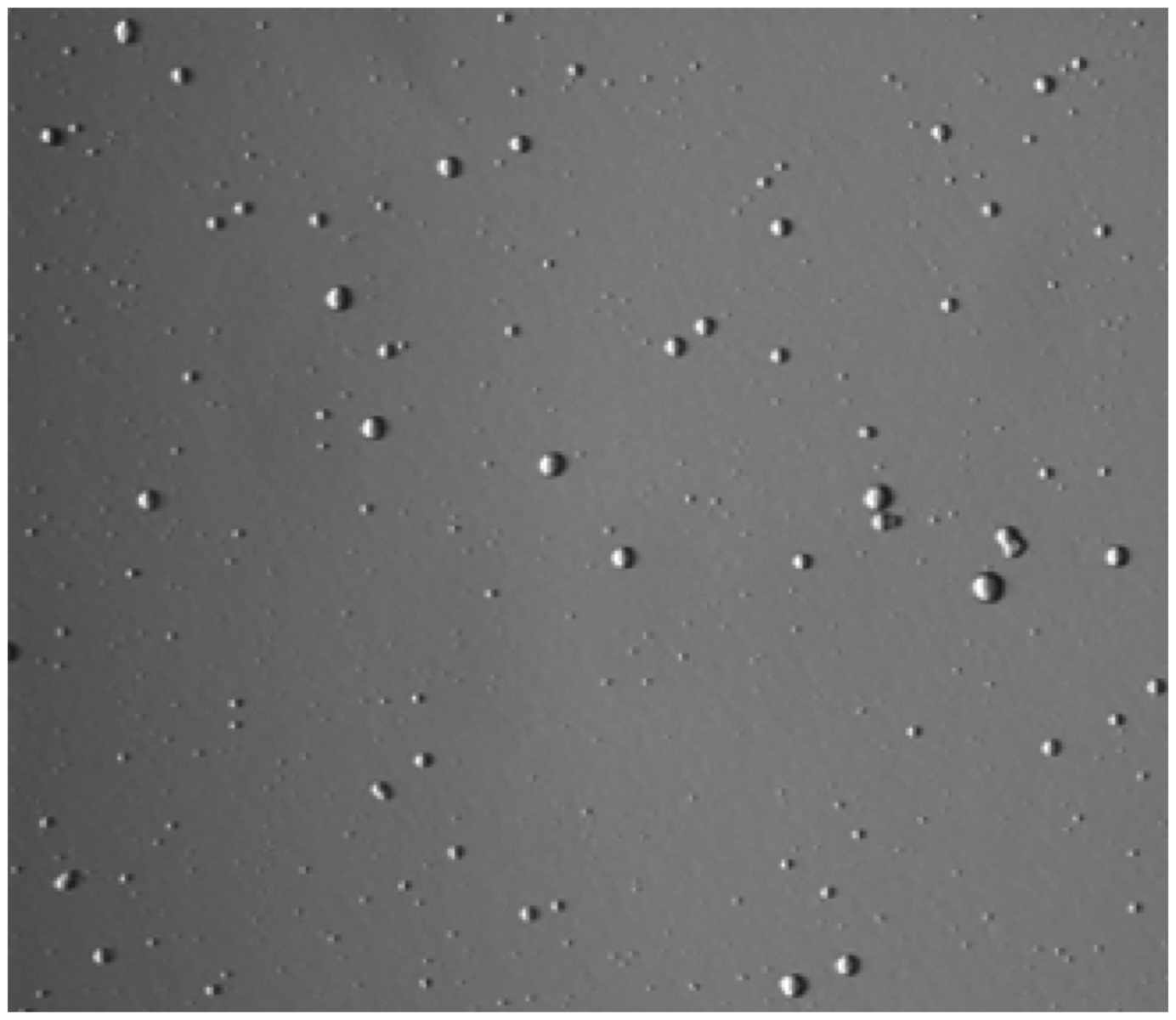Table of Contents
Definition / general | Essential features | Epidemiology | Sites | Pathophysiology | Clinical features | Laboratory | Case reports | Treatment | Clinical images | Microscopic (histologic) description | Molecular / cytogenetics description | Differential diagnosis | Board review style question #1 | Board review style answer #1 | Board review style question #2 | Board review style answer #2Cite this page: Totten AH, Farr GA, Leal SM. M. genitalium. PathologyOutlines.com website. https://www.pathologyoutlines.com/topic/microbiologymgenitalium.html. Accessed April 23rd, 2024.
Definition / general
- Atypical bacterial pathogen, stained poorly by the dyes used in Gram stain due to the absence of a cell wall
- Causative agent of nongonococcal urethritis in men and cervicovaginal infections in women
- Taxonomy: class Mollicutes, order Mycoplasmatales, family Mycoplasmataceae
Essential features
- Etiologic agent of nongonococcal urethritis
- Requires specialized media conditions and is not visible on Gram stain
- Rare extraurogenital infections in immunocompromised patients
- Increasingly antibiotic resistant (> 80% macrolide resistant, ~ 10 - 20% quinolone resistant) and clinical cure rate of tetracyclines < 30% (Clin Infect Dis 2018;66:796)
Epidemiology
- Emerging sexually transmitted infection with very high resistance rates
- Leading cause of nongonococcal urethritis in men and cervicovaginal disease (Clin Microbiol Rev 2011;24:498)
- Predominantly affects sexually active 18 - 30 year olds but found in all age groups (J Clin Microbiol 2019;57:e01125)
- Sexually transmitted; asymptomatic carriage is common
- Rare disseminated infections in immunocompromised individuals
- Common coinfection with HIV and other STIs (Neisseria gonorrhoeae, Trichomonas vaginalis, ~ 20%)
Sites
- Urogenital tract / acute and chronic urethritis / balanitis and posthitis (Microbiology 2020;166:21)
- Female reproductive tract / cervicitis / pelvic inflammatory disease (Clin Infect Dis 2015;61:418)
- Anogenital tract
- Disseminated infection
Pathophysiology
- Adhesin / attachment to host cell vital for pathogenesis / initiation of infection (Clin Microbiol Rev 2011;24:498)
- Lacks cell wall, therefore not susceptible to beta lactams
- Lipoproteins are main immunogens for immunologic responses during infection
- Macrolide resistance and fluoroquinolone resistance are common (60 - 80% and 11 - 20%, respectively) and are increasing worldwide
Clinical features
- Slow growth and high resistance development combine to make eradication difficult
Laboratory
- Does not stain on a Gram stain due to the lack of a cell wall
- Does not grow on media typically used in clinical microbiology laboratories
- Laboratory adapted strains form small, colorless, punctate colonies (dissection scope needed) on SP4 agar within 14 - 30 days when cultured aerobically at 37°C when laboratory adapted (Clin Microbiol Rev 2011;24:498)
- Color change in liquid media due to glucose metabolism (red to yellow) is characteristic
- PCR testing required to differentiate from other glucose utilizing mycoplasmas
Case reports
- 29 year old man with persistent urethritis and reactive arthritis secondary to M. genitalium infection (Diagn Microbiol Infect Dis 2013;77:278)
- 51 year old men treated for persistent M. genitalium urethritis with macrolide and quinolone resistance treated with minocycline (J Infect Chemother 2017;23:648)
- 2 cases of persistent nongonococcal urethritis caused by M. genitalium, eradicated by minocycline (Int J STD AIDS 2019;30:512)
- Case of M. genitalium causing proctitis in a man who has sex with men (MSM) (Int J STD AIDS 2019;30:623)
- HIV positive MSM and persistent macrolide resistant M. genitalium urethritis treated with spectinomycin (J Antimicrob Chemother 2017;72:624)
Treatment
- Common treatment with macrolides, quinolones and tetracyclines
- Clinical cure rate for tetracyclines is low (< 30%) so combinatorial therapy is common
- Empiric treatment is common but rates of macrolide resistance are high (60 - 80% in some cases) and fluoroquinolone resistance is increasing (11 - 20%)
- Compassionate care treatment with minocycline or spectinomycin has been reported (J Antimicrob Chemother 2017;72:624)
Clinical images
Microscopic (histologic) description
- Not known
- Organism not detected on H&E; expect an acute inflammatory background
Molecular / cytogenetics description
- FDA approved diagnostic tests are available (J Clin Microbiol 2019;57:e01125)
- NAATs targeting macrolide resistance are available (Diagn Microbiol Infect Dis 2018;91:123)
- Aptima / Hologic assay targeting 16S rRNA has 90 - 98% sensitivity and 98 - 98.5% specificity
- Utilizes in vitro transcription for amplification of 16S rRNA
- Does not determine drug susceptibility
- Cobas TV / MG assay (DNA target unknown) has 96.6 - 100% sensitivity and 96 - 99.8% specificity
- Currently most sensitive available diagnostic method and relies on qPCR technology
- Does not determine drug susceptibility (Journal of Clinical Microbiology: Mycoplasma genitalium Detection in Urogenital Specimens from Symptomatic and Asymptomatic Men and Women by Use of the cobas TV/MG Test [Accessed 24 July 2020])
- UAB Diagnostic Mycoplasma Laboratory assay targeting 23S rDNA provides only readout of macrolide sensitivity or resistance based on molecular characteristics by qPCR. 95% positive agreement and 98% negative agreement with reference MgPa standard PCR
Differential diagnosis
- Neisseria gonorrhea:
- Gram negative diplococci, oxidase positive, NAAT recommended
- Chlamydia trachomatis:
Board review style question #1
- A man presents to a sexual health clinic with persistent pain during urination despite empiric treatment with 1g azithromycin. Urine culture, Gram stain and first line molecular tests for urethritis are negative. What organism is the most likely culprit?
- Chlamydia trachomatis
- Mycoplasma genitalium
- Mycoplasma pneumoniae
- Neisseria gonorrhea
Board review style answer #1
B. Mycoplasma genitalium is the most likely pathogen, as other urogenital pathogens such as C. trachomatis and N. gonorrhea have been ruled out by routine testing. M. pneumoniae is a pulmonary pathogen and is not known to cause infection in the urogenital tract.
Comment Here
Reference: M. genitalium
Comment Here
Reference: M. genitalium
Board review style question #2
- Mycoplasma genitalium is best visualized by what microbiology laboratory staining procedure?
- Gram stain
- Hematoxylin and eosin stain
- Methylene blue / Gentian violet stain
- No stains reliably stain this organism
Board review style answer #2
D. No stains reliably identify this organism. M. genitalium utilizes cholesterol in its membrane and does not have a layer of peptidoglycan, outer membrane or cell wall to stain.
Comment Here
Reference: M. genitalium
Comment Here
Reference: M. genitalium





